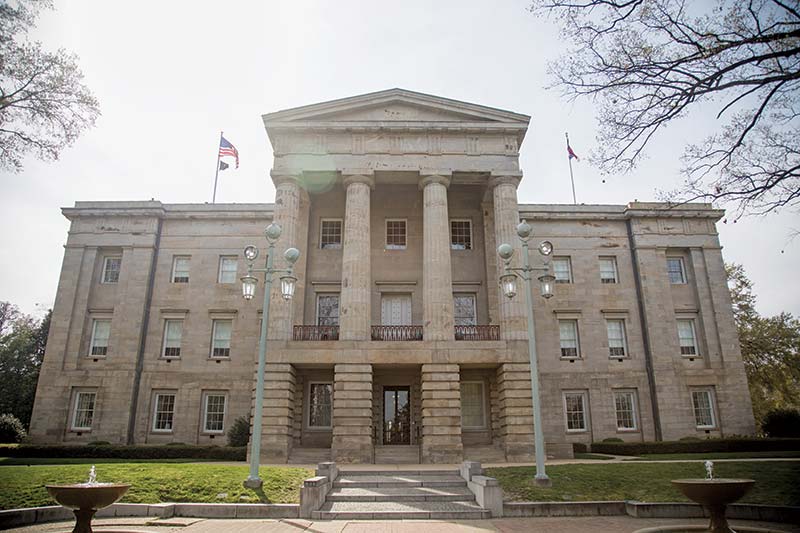Meredith Reports on Women in N.C. Politics
- Published

Politics is often referred to as the last “glass ceiling.” The 2016 presidential election confirmed that statement as Donald Trump defeated Hillary Clinton, who most experts thought was the prohibitive favorite after the conventions. This year − 2018 − has been called the “Year of the Woman” in politics because of the increase in women candidates across the country and the power exerted by women voters in 2017 elections in New Jersey and Virginia, as well as their turnout in primaries in 2018.
Women make up 51.4 percent of the population in the state and almost 54 percent of the voters in North Carolina. These demographic data points, as well as women challengers running in several districts, might make many citizens think women are going to start making headway on the gender disparity that has existed between men and women officeholders.
Electoral victories in 2018 are not likely to change the gender gap of North Carolina politics. North Carolina remains a male-dominated state in terms of officeholders and candidates, especially in rural parts of the state.
Since the last Status of Women in North Carolina Politics report in 2015, women have gained and lost ground in terms of elected and appointed positions. North Carolina has approximately 5,000 elected positions and almost an equal number of appointed positions at the state and local level. Women hold less than a quarter of all elected positions and around a third of all appointed positions. At the elected level, this is a slight decline over 2015.
There are bright spots for women in North Carolina politics:
Despite these positives, there are many aspects of women in North Carolina politics that are negative:
In order to be a truly representative democracy, women, who are a majority of the state’s citizens, need a bigger place at the political table.
The 2018 Status of Women in North Carolina report may be surprising to some and disappointing to others, particularly because it shows North Carolina has seen a drop in the number of women candidates since 2015. Further, the report shows the number of elected and appointed officeholders has not improved across the board.
For those who study gender and politics, the results are hardly surprising. The fundamentals of North Carolina politics for women have changed little in recent years. Campaigns for many offices − not just high profile offices like governor or Congress − have become more time consuming, expensive, and negative. The idea of “election aversion” is something that affects many qualified people, not just women, who decide running for office is just not worth it.
North Carolina, especially in many rural areas, has a political culture of male candidates that may make it more difficult for women to see themselves running for and serving in office. In many communities across the state, not only are there no women currently serving in any offices, but there never have been. Women in those communities who aspire to serve in an appointed or elected office have no role models or mentors in their communities.
Even candidate recruitment is challenging for political parties. As we know from academic research, women candidates are cultivated (i.e., identified, encouraged, and otherwise groomed) over time, but the parties often work with a tight schedule and limited resources for recruiting across all one hundred counties.
There are positives about the 2018 election cycle and beyond. More women of color are running, as well as younger women. Anecdotally, the stories of a 23-year old Muslim woman making a credible run for the Raleigh city council in 2017 and the diversification of city councils in Charlotte and Greensboro mean that, in places, politics is becoming more representative of the citizens.
The report includes recommendations for media, lawmakers, and advocacy groups. A sample of the recommendations are below.
News Media
Lawmakers and Political Parties
Advocacy and Political Action Groups
View the full report at meredith.edu/college-research/the-status-of-women-in-nc-politics.
News Director
316 Johnson Hall
(919) 760-8087
Fax: (919) 760-8330
PRINCETON REVIEW
U.S. NEWS
NICHE
3800 Hillsborough Street Raleigh, NC 27607-5298 | (919) 760-8600 Fax: (919) 760-8330 | © 2024 All Rights Reserved.